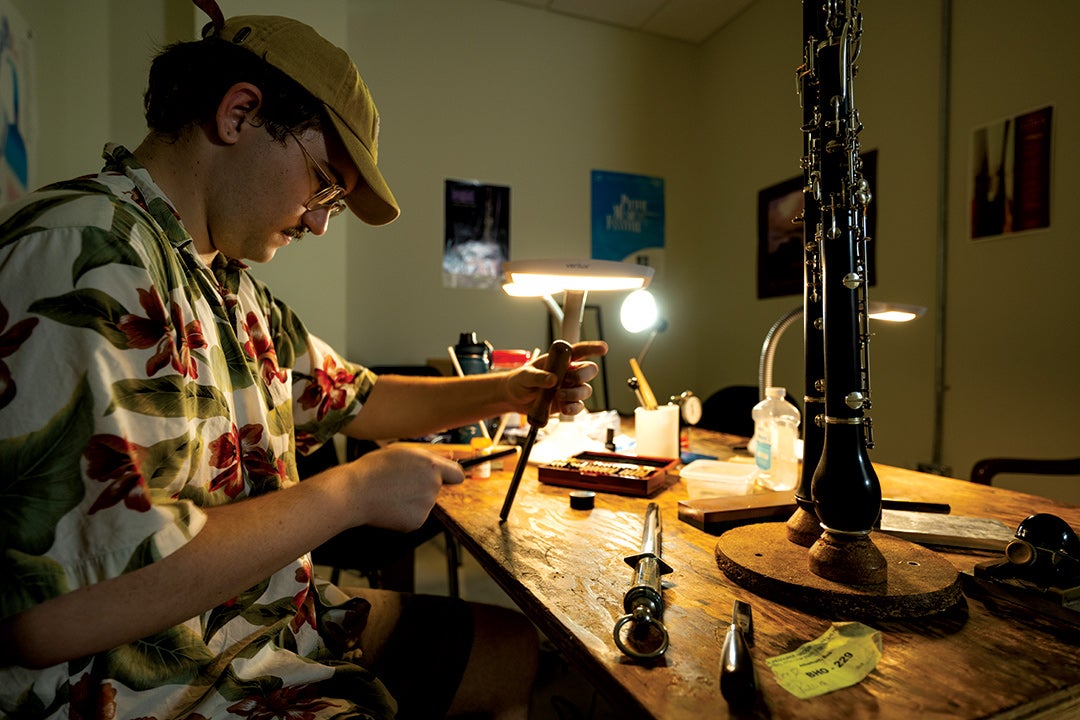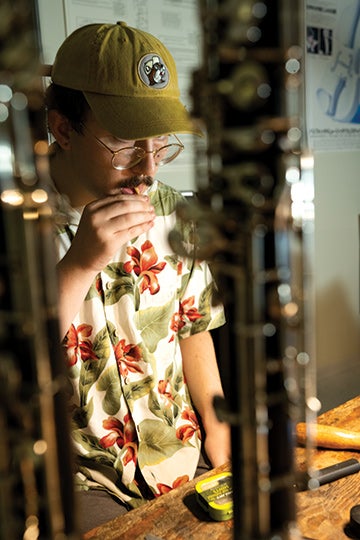The Reed Room
A compact workshop in Alice Pratt Brown Hall is where student oboists practice the skill of reed making.


Every orchestral performance begins with the sound of an oboe, a steady A-note that tunes the orchestra. The oboe’s double reed is crafted from a piece of cane that is split and folded in half, carefully shaped, then tied together to a metal tube; a cork attached to the tube fits into the top of the instrument.
“It’s like the soul of the oboe,” says Robert Atherholt, professor of oboe. Because oboe reeds are so delicate and ephemeral — lasting about the length of a single concert — they are in need of constant replenishment. For years, Atherholt’s studio served as the de facto reed room; today, students have a compact workshop in Alice Pratt Brown Hall.
A sturdy wooden table bears brass machinery, task lamps and other tools — bags of unprocessed cane, imported from Southern France, are stored nearby. “It’s communal, and it makes it a lot more efficient to have one room [for reeds] so that there’s not cane shavings all over the school,” says Jacob Duff ’24. “I think so much of reed making is the knowledge that’s passed from oboist to oboist.”
— Lynn Gosnell
